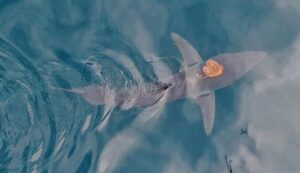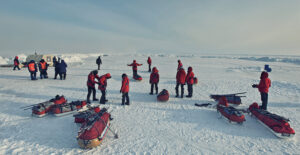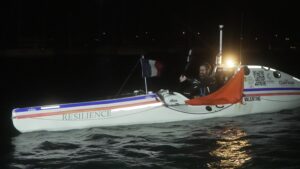Such a high, even if for a short duration, could impact the formation of winter sea ice.
(Discovery News) A deep low pressure system in the North Atlantic is expected to reach maximum intensity off Iceland by Wednesday morning, battering that country with high winds and bringing yet more rain to the United Kingdom, which is already reeling from record floods. Expected to be one of the strongest storms — if not the strongest — ever recorded in this area of the North Atlantic, it’s at least partly a continuation of the same low pressure system that helped spawn tornadoes in Dallas on Saturday.
Heading north and east, that system is now rounding Greenland, pushing warm temperatures ahead of it and drawing high winds behind it, where it seems set to clash with a pair of low pressure systems already in the Atlantic.
Intense storms off Iceland and Greenland are not uncommon during winter; but, notes climate writer Andrew Freedman at Mashable, ”in a region famous for ship-sinking waves and relentless blizzards, this storm may stand out for its sheer intensity.”
One consequence of the storm system will be a surge of warmth northward from the Atlantic deep into the High Arctic. Temperatures at the North Pole — which, it’s worth remembering, is presently enveloped in 24 hour darkness — could reach 40 degrees F, warmer than Oklahoma City, El Paso, and southern California, and fully 50 degrees warmer than the seasonal average.
Large temperature fluctuations in the Arctic are relatively common, notes Freedman, but such an anomaly is “extreme.” Indeed, according to meteorologist Bob Henson at The Weather Underground, there have been only three instances since 1948 when North Pole temperatures have hit or exceeded the freezing mark in December, and none in January through March.
Such a high, even if for a short duration, could impact the formation of winter sea ice, at a time when sea ice levels in spring, summer and fall are already at historic lows as a result of climate change.
Last week, NOAA released the latest edition of its annual Arctic Report Card, in which it noted that 10 years ago “Arctic sea ice set a new record unlike anything previously observed. The 2015 low is 350,000 square miles below that. In fact, the nine lowest Arctic sea ice extents in the satellite record have all occurred in the last nine years.” This year’s sea ice minimum was the fourth smallest on record.
Sea ice during the winter maximum is becoming younger and thinner, whereas, in 1985, what is known as “very old ice” — ice that has survived several summer melt cycles — constituted 25 percent of the Arctic icepack. In 2015 that figure was a mere 3 percent.
Because it’s thinner, younger sea ice is less resistant to melting, and a high proportion of first-year ice means that the ice pack effectively must rebuild itself completely each winter.
“}






